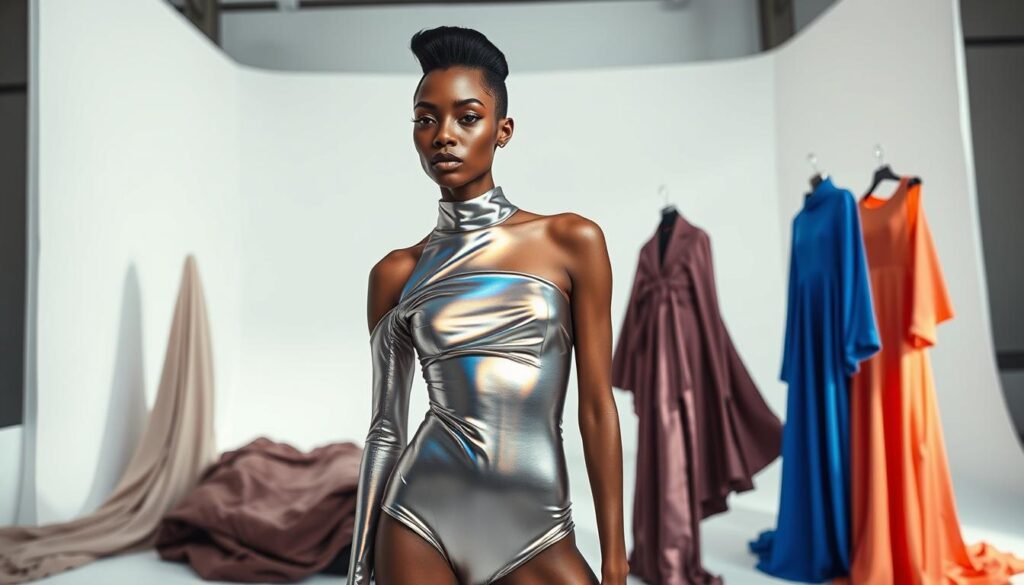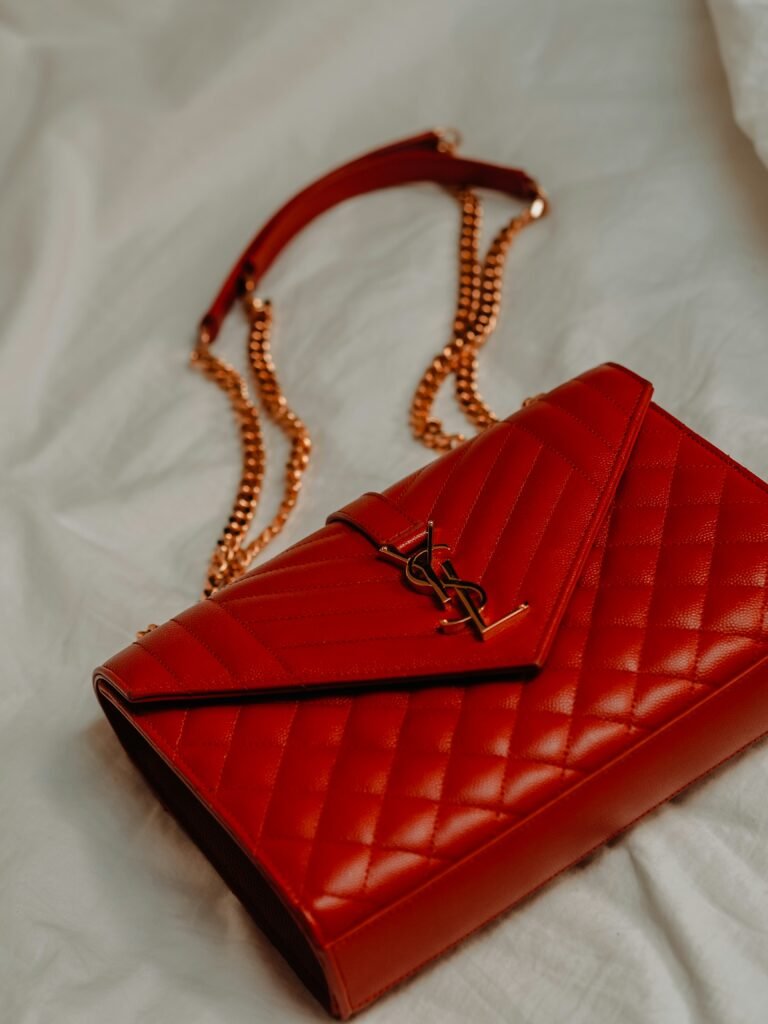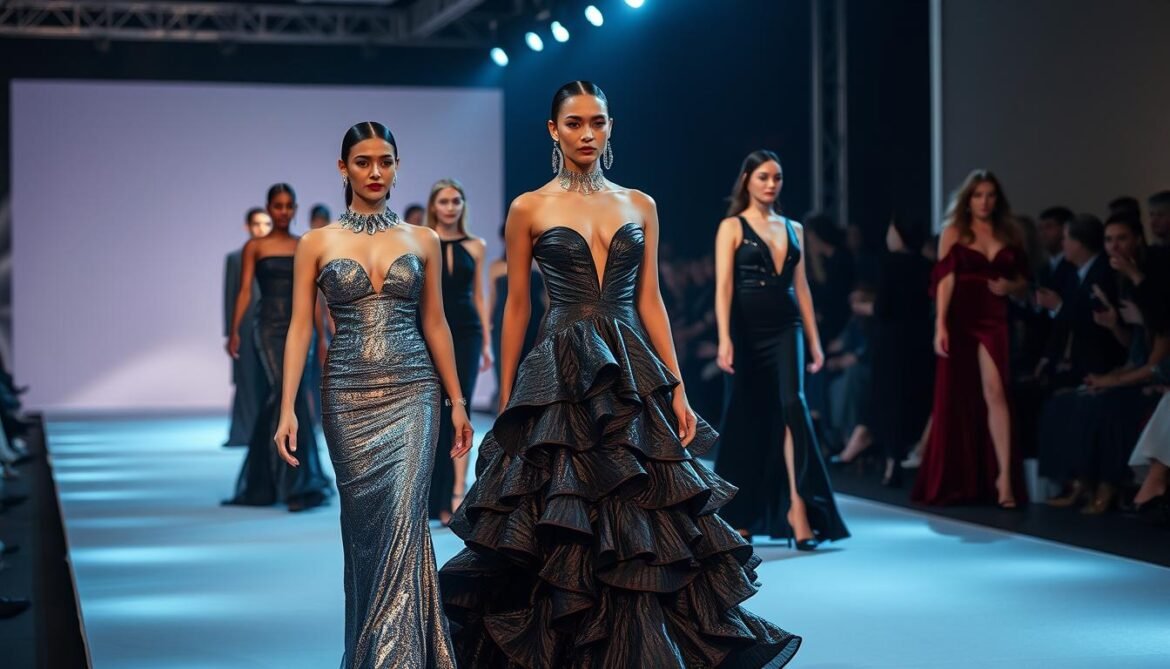The world of high-end fashion is always evolving, and staying ahead of the curve is crucial for those who want to make a statement. As we step into 2025, the latest luxury fashion trends are shaping up to be more exciting than ever.
With the fashion industry constantly pushing boundaries, this year’s trends promise to bring a mix of innovation, sustainability, and elegance. From statement pieces to understated sophistication, the 2025 fashion scene is set to cater to diverse tastes and preferences.
Key Takeaways
- Emergence of sustainable luxury fashion
- Increased focus on digital fashion experiences
- Revival of classic styles with a modern twist
- Growing influence of social media on fashion trends
- Rise of inclusive and diverse fashion
The Evolution of Luxury Fashion: From 2024 to 2025
Luxury fashion is experiencing a paradigm shift as 2024 gives way to 2025, driven by changing consumer values and technological advancements. The luxury sector is witnessing a significant transformation, with brands adapting to new market realities and consumer preferences.
Key Market Shifts in the Luxury Sector
The luxury market is undergoing considerable changes, driven by factors such as sustainability, digitalization, and evolving consumer demographics. Sustainability has become a critical factor, with consumers increasingly demanding eco-friendly and ethically sourced products.
| Market Shift | Description | Impact |
|---|---|---|
| Sustainability | Eco-friendly and ethically sourced products | Increased consumer trust and brand loyalty |
| Digitalization | Integration of technology in fashion | Enhanced customer experience and new sales channels |
| Demographic Changes | Shifts in age and cultural diversity | New market opportunities and tailored marketing strategies |
The New Definition of Luxury in 2025
In 2025, luxury is being redefined by the intersection of exclusivity, sustainability, and technology. Exclusivity is no longer just about high price points but also about unique experiences and personalized products. Luxury brands are leveraging technology to offer bespoke services and create immersive brand experiences.
The new definition of luxury also places a significant emphasis on sustainability, with consumers expecting brands to demonstrate their commitment to environmental and social causes. This shift is driving innovation in materials, production methods, and supply chain transparency.
Luxury Fashion Trends 2025: The Complete Forecast
The year 2025 promises to be a pivotal moment in luxury fashion, with trends that blend tradition and innovation. As the industry continues to evolve, several key elements are emerging that will define the luxury fashion landscape.
Silhouettes and Proportions Defining the Year
In 2025, luxury fashion is expected to feature bold silhouettes and innovative proportions. Designers are experimenting with oversized garments, intricate details, and modern twists on classic styles. Voluminous sleeves, asymmetrical hems, and layered looks are set to dominate the runways.
Runway to Reality: How High Fashion Translates to Everyday Luxury
The gap between high fashion and everyday luxury continues to narrow in 2025. Designers are creating pieces that are not only visually stunning but also wearable and practical. Statement pieces with bold designs are being incorporated into more subdued, everyday outfits, making high fashion accessible to a wider audience.
Leading Fashion Houses Setting the Tone
Fashion houses like Gucci, Chanel, and Louis Vuitton are at the forefront of luxury fashion in 2025. Their latest collections showcase a mix of modernity and heritage, with a focus on craftsmanship and attention to detail. These brands are setting the tone for the industry, influencing trends and styles that will be seen throughout the year.
Sustainable Luxury: The Eco-Conscious Revolution
The luxury fashion industry is undergoing a significant transformation with the rise of sustainable luxury. As the world becomes more environmentally conscious, luxury brands are adapting to meet the growing demand for eco-friendly fashion. This shift is not just a trend but a fundamental change in how luxury fashion operates.
Ethical Sourcing and Production Methods
Luxury brands are now focusing on ethical sourcing and production methods. This includes using materials that are sustainably sourced, ensuring fair labor practices, and reducing waste in their production processes. Brands like Stella McCartney are leading the way by incorporating eco-friendly materials into their collections and promoting transparency in their supply chains.
Upcycled Materials in High-End Collections
The use of upcycled materials in high-end collections is gaining popularity. Designers are getting creative with materials that would otherwise end up in landfills, turning them into unique and luxurious pieces. This approach not only reduces waste but also adds an element of exclusivity to the products.
Carbon-Neutral Luxury Brands Leading the Way
Some luxury brands are taking significant steps towards becoming carbon-neutral. By offsetting their carbon emissions and investing in renewable energy, these brands are setting a new standard for sustainability in the industry. For instance, Gucci has launched initiatives aimed at reducing its carbon footprint, making it a leader in sustainable luxury.
The eco-conscious revolution in luxury fashion is a positive step towards a more sustainable future. As consumers, supporting brands that prioritize sustainability can drive further change in the industry.
Technological Integration in 2025 Luxury Apparel
In 2025, the fusion of technology and luxury fashion is creating a new paradigm in the apparel industry. This integration is not just about adding tech to clothing; it’s about reimagining the entire luxury experience for consumers.
Smart Fabrics and Wearable Tech
One of the most significant advancements in luxury apparel is the development of smart fabrics and wearable technology. These innovations are transforming garments into interactive, functional pieces that not only look luxurious but also provide additional benefits such as temperature regulation, health monitoring, and enhanced comfort.
Virtual Fashion Experiences and Digital Ownership
The rise of virtual fashion experiences is another key trend in 2025. Luxury brands are creating digital-only collections that allow consumers to own and showcase virtual garments, blurring the lines between the physical and digital worlds. This shift is not only sustainable but also opens up new revenue streams for luxury fashion houses.
3D Printing and On-Demand Manufacturing
3D printing and on-demand manufacturing are revolutionizing the production process in luxury fashion. These technologies enable brands to create complex designs that were previously impossible to produce, reduce waste, and offer made-to-order pieces that cater to individual consumer preferences.
The technological integration in 2025 luxury apparel is a game-changer, offering consumers a more personalized, interactive, and sustainable luxury experience. As technology continues to evolve, we can expect to see even more innovative applications in the luxury fashion sector.
Statement Accessories Defining 2025’s Luxury Aesthetic
The year 2025 is all about expressing personal style through statement accessories that combine traditional craftsmanship with modern technology. Luxury accessories are becoming the defining feature of high-end fashion, with designers pushing the boundaries of innovation and elegance.
Handbag Trends: Shapes, Materials, and Designer Innovations
Handbags in 2025 are not just functional; they’re a statement piece. Designers are experimenting with unusual shapes, sustainable materials, and innovative designs. For instance, Chanel’s latest collection features bags made from recycled materials, while Gucci is pushing the boundaries with bold, oversized designs.
- Unconventional shapes and sizes
- Sustainable and recycled materials
- Bold, eye-catching designs
Jewelry Evolution: From Minimalism to Maximalism
The jewelry scene in 2025 is witnessing a shift from minimalism to maximalism. Designers are embracing bold, statement pieces that are as much about making a fashion statement as they are about showcasing craftsmanship. Bulgari and Cartier are leading the way with intricate designs and the use of precious stones.
Some key trends include:
- Layering of multiple pieces
- Use of colorful gemstones
- Oversized, statement earrings
Footwear Revolution: Comfort Meets Couture
Footwear in 2025 is all about combining comfort with high-end fashion. Designers are incorporating cutting-edge technology to create shoes that are not only stylish but also comfortable. Christian Louboutin and Jimmy Choo are at the forefront, offering designs that are both elegant and wearable.
Key features include:
- Innovative materials for comfort
- Customizable designs
- Sustainable production methods
Gender-Fluid Fashion: Breaking Boundaries in Luxury
In 2025, luxury fashion is set to become more inclusive than ever, with gender-fluid fashion leading the way. This trend is not just about challenging traditional gender norms but also about creating a more diverse and accepting fashion industry.

The rise of gender-fluid fashion in luxury is marked by several key developments, including the introduction of unisex collections from traditional luxury houses and the redefinition of masculine and feminine elements in design.
Unisex Collections from Traditional Luxury Houses
Many traditional luxury fashion houses are now embracing the gender-fluid trend by introducing unisex collections. These collections are designed to be worn by anyone, regardless of gender, and feature clothing that is both stylish and versatile.
- Gucci’s unisex collections have been particularly successful, offering a range of clothing and accessories that appeal to a broad audience.
- Other luxury brands, such as Louis Vuitton and Prada, are also exploring the unisex market, creating clothing that is both elegant and androgynous.
Redefining Masculine and Feminine Elements in Design
The gender-fluid trend is also leading to a redefinition of traditional masculine and feminine elements in fashion design. Designers are experimenting with new silhouettes, colors, and fabrics to create clothing that is both gender-neutral and stylish.
Key elements include:
- Mixing traditionally masculine and feminine fabrics and textures.
- Using bold colors and patterns to create a more androgynous look.
- Experimenting with new silhouettes that blur the lines between traditional gender norms.
By embracing gender-fluid fashion, luxury brands are not only challenging traditional norms but also creating a more inclusive and diverse fashion industry.
Personalization: The Ultimate Luxury Experience
Personalization is redefining the luxury fashion landscape, offering consumers a tailored experience like never before. In 2025, luxury fashion houses are leveraging technology to provide bespoke services that cater to individual tastes and preferences.
Bespoke Services and Made-to-Measure Offerings
Bespoke services have long been a hallmark of luxury fashion, allowing clients to own truly unique pieces. Luxury houses like Gucci and Chanel are expanding their bespoke offerings, incorporating made-to-measure services that blend traditional craftsmanship with modern technology.
For instance, some brands are using 3D scanning technology to create garments that fit perfectly, enhancing the personalization aspect. This approach not only ensures a flawless fit but also allows for a high degree of customization in terms of design and materials.
“The future of luxury fashion lies in its ability to personalize the experience for each client, making them feel seen and understood.”
AI-Driven Style Recommendations and Custom Design
The integration of AI in luxury fashion is revolutionizing the way brands interact with their clients. AI-driven style recommendations are becoming increasingly sophisticated, allowing brands to offer personalized styling advice based on a client’s purchase history, preferences, and even social media activity.
| Brand | AI-Driven Feature | Benefit |
|---|---|---|
| Tom Ford | Personalized Styling | Tailored recommendations based on client preferences |
| Burberry | Custom Design | Ability to customize designs through digital platforms |
By embracing AI-driven solutions, luxury brands can create a more engaging and personalized experience, fostering a deeper connection with their clientele.
How to Invest in 2025’s Luxury Trends
The key to successful luxury investing lies in understanding the trends that will define 2025. As luxury fashion continues to evolve, it’s crucial to make informed decisions that balance style with long-term value.
Building a Timeless Wardrobe with Trend-Forward Pieces
Creating a timeless wardrobe involves selecting pieces that are both stylish and enduring. Investing in high-quality, trend-forward items can elevate your wardrobe while ensuring that your investments remain relevant over time. Consider incorporating statement pieces from leading designers, such as Gucci or Chanel, into your collection.
| Investment Piece | Brand | Price Range |
|---|---|---|
| Classic Handbag | Chanel | $4,000 – $6,000 |
| Luxury Watch | Rolex | $8,000 – $12,000 |
Price Points and Value Retention in Luxury Purchases
Understanding the price points of luxury items and their potential for value retention is vital. Luxury goods with high craftsmanship and limited production runs tend to retain their value better. For instance, certain limited-edition handbags or bespoke suits can appreciate in value over time.

Balancing Statement Pieces with Classic Investments
A well-balanced luxury wardrobe combines statement pieces with classic investments. While statement pieces, like bold accessories, can make a fashion statement, classic investments, such as a timeless coat or a quality watch, provide enduring value. Striking the right balance between the two ensures that your wardrobe remains both stylish and valuable.
By understanding the trends, investing in quality pieces, and balancing statement items with classic investments, you can create a luxury wardrobe that is both fashionable and a sound financial investment.
Conclusion: Embracing the Future of Luxury Fashion
The luxury fashion landscape is evolving rapidly, driven by innovative trends and consumer preferences. As we step into 2025, the industry is poised for significant transformations, from sustainable luxury to technological integration.
The 2025 fashion forecast highlights a shift towards eco-conscious luxury, with brands adopting ethical sourcing and production methods. Sustainable luxury is no longer a niche but a mainstream expectation, driving growth in the luxury sector.
Luxury fashion trends in 2025 are characterized by a blend of tradition and innovation, with a focus on personalized experiences and digital ownership. As the industry continues to evolve, embracing these changes will be crucial for both luxury brands and consumers.
By understanding and adapting to the 2025 fashion forecast, luxury fashion enthusiasts can stay ahead of the curve, investing in timeless pieces that not only reflect current trends but also stand the test of time.



